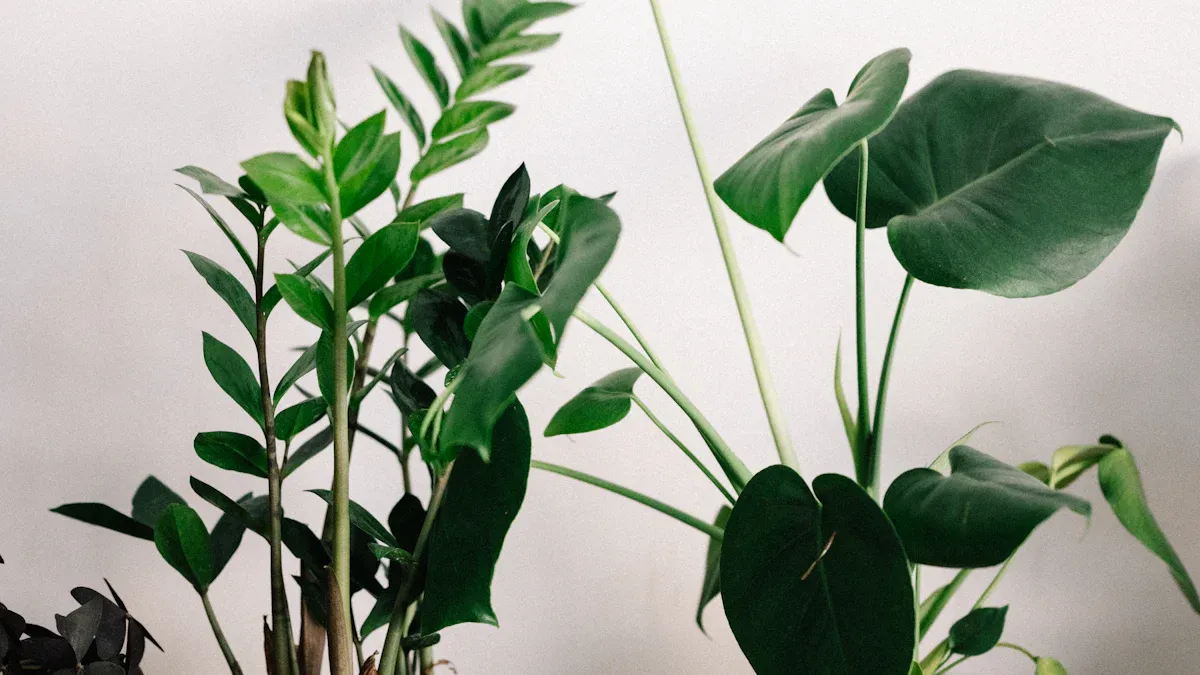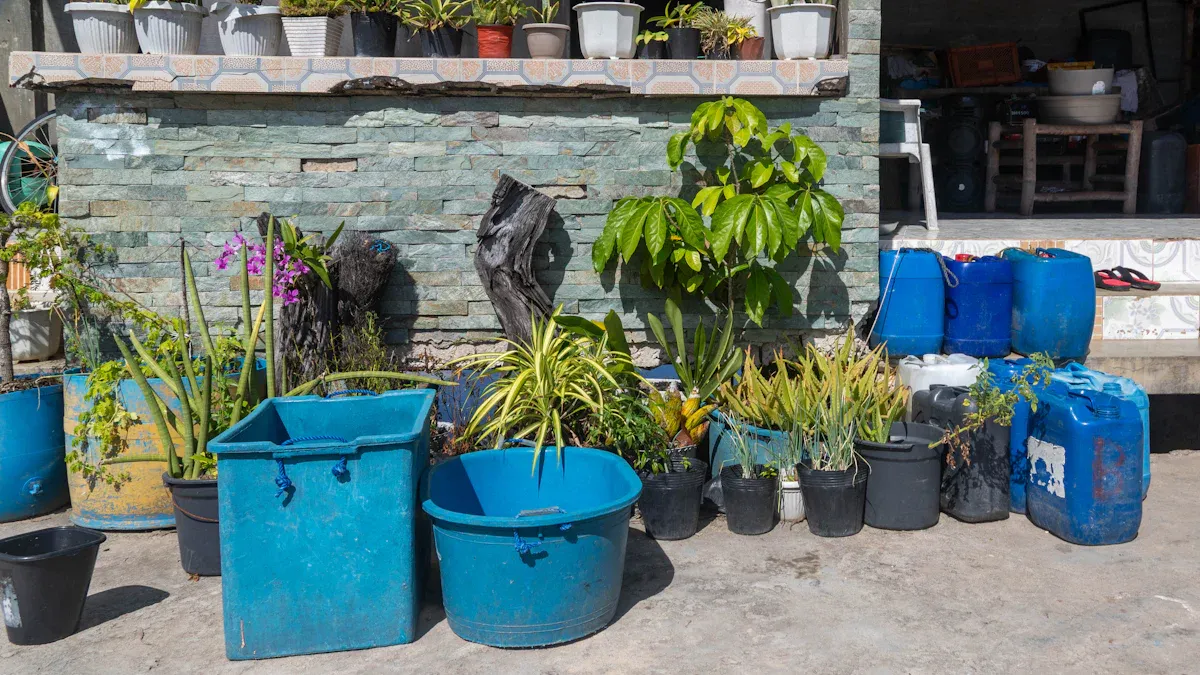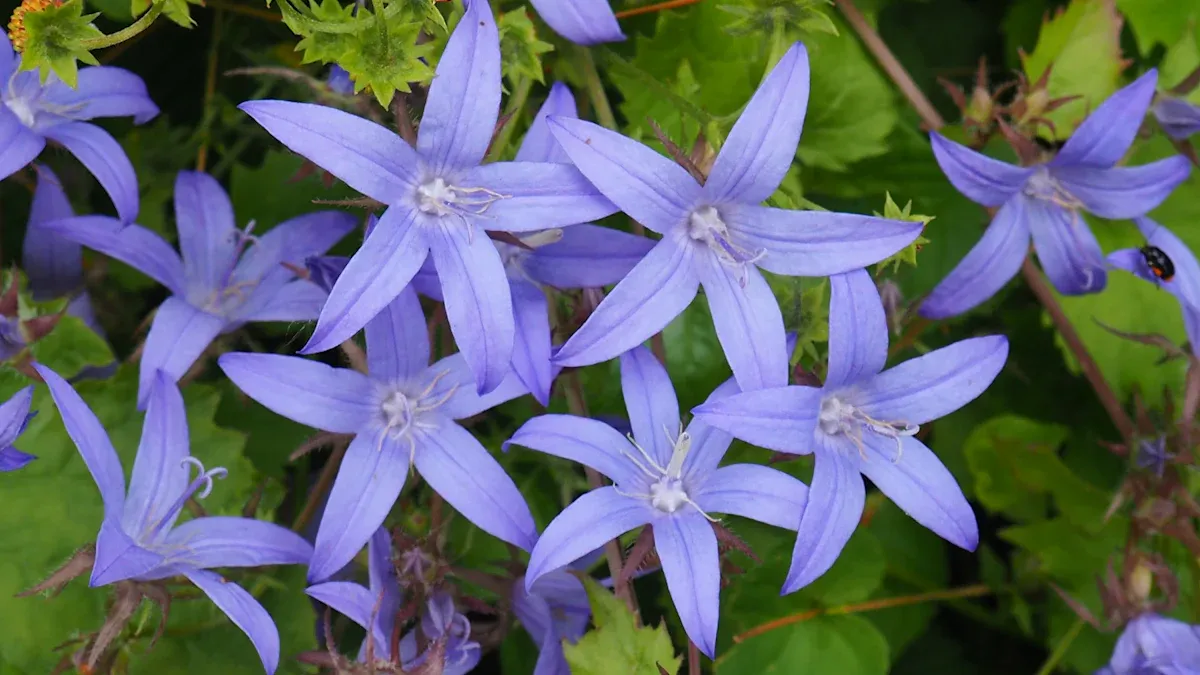
Taking care of your blue star plant in a pot is essential for its health and beauty. You want to provide the right growing conditions to help it thrive. This plant needs specific attention to its soil, sunlight, and watering needs. By understanding these maintenance requirements, you can ensure your container plant flourishes and brings vibrant life to your space.
Key Takeaways
Use well-draining soil for your blue star plant. This prevents root rot and helps the plant absorb nutrients effectively.
Ensure your blue star plant receives at least 6 hours of sunlight daily. This promotes healthy growth and vibrant blooms.
Water your blue star plant regularly until it is established. After that, it can tolerate drought, so check the soil moisture before watering.
Prune dead leaves and spent flowers to encourage new growth. This keeps your plant healthy and looking its best.
Stay vigilant against pests like aphids and spider mites. Early detection and treatment can keep your blue star plant thriving.
Benefits of Container Gardening

Container gardening offers you a world of advantages. Whether you’re a seasoned gardener or just starting, growing plants in pots can be a game-changer. Here are some key benefits:
Flexibility in Plant Placement: You can easily move your pots around to find the perfect spot for sunlight or shade. This flexibility allows you to create a dynamic garden that changes with the seasons.
Accessibility: If you have limited mobility, container gardening makes it easier to care for your plants. You can place pots at a comfortable height, reducing the need to bend or kneel.
Improved Growing Conditions: Pots allow you to control the soil quality and drainage. This control can lead to healthier plants. For instance, Blue Star plants thrive in well-draining soil, which is easier to manage in containers.
Aesthetic Enhancement: Containers can beautify your space. You can mix and match different plants to create stunning displays. Imagine a pot filled with vibrant Blue Star flowers alongside other colorful perennials!
When it comes to the health of your plants, container gardening has its perks. For example, Blue Star plants often need more nutrients than those grown in traditional gardens. Frequent watering can wash away essential nutrients, so you might need to add fish emulsion or compost to keep your plants thriving.
Moreover, container gardening allows you to design your space creatively. You can use pots to showcase the trailing beauty of Blue Star Creeper, making it an attractive addition to your garden. Just remember, container plants dry out faster than those in the ground, so keep an eye on their watering needs.
Blue Star Plant Requirements

Soil and Drainage
To keep your blue star plant healthy, start with the right soil. Blue star plants thrive in well-draining soil. This type of soil allows excess water to escape, preventing root rot. Here are some key points to consider:
Blue star plants prefer slightly acidic to neutral pH levels.
Loamy soil works best, as it retains moisture without becoming soggy.
Proper drainage is crucial. It helps prevent overwatering, which can lead to root rot. Healthy roots need a balance of moisture for nutrient absorption and overall vitality.
When planting, consider adding perlite or sand to improve drainage. This mix will help your blue star fern flourish in its container.
Sunlight Needs
Sunlight is vital for your blue star plant’s growth. These plants prefer full sun to light shade. Here’s what you should know:
Aim for at least 6 hours of direct sunlight each day. This exposure promotes vibrant foliage and encourages blooming.
If you’re growing your blue star plant indoors, place it near a window that receives ample light.
Be cautious of excessive sunlight, as it can scorch the leaves. If you notice browning edges, your plant might need some shade during peak heat.
The right light conditions can significantly influence your plant’s growth and leaf color. For instance, deep blue light is best for seedlings, while warmer colors promote flowering.
Watering Tips
Watering your blue star plant correctly is essential for its health. Here are some tips to keep in mind:
Water regularly until your plant is established. The soil should remain consistently moist but not waterlogged.
After establishment, blue star plants are drought tolerant. They mainly need watering during extended dry periods.
Monitor the soil moisture. If the top 1-2 inches feel dry, it’s time to water.
Be mindful of the signs of overwatering and underwatering. Overwatering can lead to yellowing leaves and mushy roots, while underwatering may cause wilting and crispy leaves. Adjust your watering routine based on the season and your plant’s needs.
By following these guidelines, you can create an ideal environment for your blue star plant to thrive in its pot.
Maintenance for Blue Star Fern
Taking care of your blue star fern involves a few essential maintenance tasks. By focusing on pruning, pest management, and fertilization, you can keep your plant healthy and thriving.
Pruning Techniques
Pruning your blue star fern helps maintain its shape and overall health. Here are some effective techniques:
Cut for Shape: Trim the plant to achieve the desired size or shape. This keeps your fern looking neat and encourages new growth.
Remove Dead Leaves: Dead or yellowing fronds can attract diseases and pests. Regularly check for these and remove them promptly.
You don’t need to prune your blue star fern frequently. Instead, focus on removing any yellowing or damaged fronds to promote better growth. Use clean scissors or shears to prevent introducing diseases.
Pest Management
Pests can be a nuisance for your blue star fern, but you can manage them effectively. Common pests include aphids, scale insects, and spider mites. Here’s how to handle them:
Aphids: These tiny pests suck sap from the plant, causing browning of fronds. Remove affected fronds and wash the plant with water to dislodge them.
Scale Insects: They appear as small, hard bumps on the fronds. Treat them by applying rubbing alcohol on a cotton swab to remove them.
Spider Mites: Look for tiny reddish dots on your fern. Prune affected fronds and use horticultural soap sprays to control their population.
Here’s a quick overview of how these pests impact your blue star fern:
Pest Type | Impact on Blue Star Ferns |
|---|---|
Spider Mites | Cause stippled or dusty leaves and weaken the plant. |
Mealybugs | Suck sap, leading to overall decline in vigor. |
Scale Insects | Feed on sap, appearing as small, hard bumps on the fronds. |
Slugs & Snails | Chew on fronds, leaving ragged edges or holes. |
By staying vigilant and addressing pest issues promptly, you can keep your blue star fern healthy and beautiful.
Fertilization Practices
Fertilizing your blue star fern is crucial for its growth. Here are some best practices:
Use a Diluted Liquid Plant Feed: Apply this every two months during spring and summer. It provides essential nutrients without overwhelming the plant.
Choose a Balanced Fertilizer: A mild, balanced fertilizer or one with a slightly higher nitrogen ratio works well. Feed your fern once a month during the growing season.
Avoid Winter Fertilization: Fertilizing during winter can lead to root burn and brown fronds. Stick to the growing season for best results.
Fertilizing regularly during warm months can positively influence the growth rate and leaf quality of your blue star fern. Just remember, these ferns aren’t heavy feeders, so light applications are sufficient.
By following these maintenance tips, you can ensure your blue star fern remains a stunning addition to your garden.
Caring for Blue Star Flowers
To encourage your blue star flowers to bloom beautifully, you need to follow a few key practices. Start by planting your blue star plant in well-drained soil. Choose a spot that gets full sun to partial shade. This light exposure helps the plant thrive and produce more flowers. Here are some additional tips to promote blooming:
Water regularly until the plant is established. Keep the soil moist but not soggy.
Apply a balanced, slow-release fertilizer in early spring. This gives your plant the nutrients it needs to bloom.
Mulch around the base to retain moisture and suppress weeds.
Remove spent flowers and dead foliage. This encourages new growth and keeps your plant looking tidy.
After blooming, prune spent flower stalks. This redirects energy to new growth, leading to more blooms.
Now, let’s talk about how seasonal changes affect your blue star plant. The right temperature and humidity can make a big difference in blooming. Here’s a quick look at how temperature influences your plant:
Temperature Range | Effect on Blue Star Plants |
|---|---|
60°F to 75°F (15°C to 24°C) | Optimal growth and flowering |
Below -40°F (-40°C) | Cold tolerance |
Above 85°F (29°C) | Causes stress, impacting health and growth |
As the seasons change, adjust your care routine accordingly:
Season | Care Adjustment |
|---|---|
Fall | Trim back dead foliage and add mulch for insulation. |
Winter | Cover with burlap or frost cloth; ensure soil is not waterlogged. |
Spring | Plant after the last frost and apply balanced fertilizer as new growth appears. |
Summer | Increase watering during dry spells and deadhead spent flowers to encourage more blooms. |
By following these tips, you can enjoy a vibrant display of blue star flowers throughout the growing season. Remember, your attention to detail in care will reward you with stunning blooms!
Caring for your blue star fern in a pot can be rewarding and fun! Remember to provide well-draining soil, adequate sunlight, and a consistent watering schedule. Avoid common mistakes like using containers that are too small or over-fertilizing. By following these tips, you’ll enjoy a vibrant and healthy plant that enhances your space. Keep an eye on pests and adjust your care as the seasons change. With a little attention, your blue star fern will thrive and bring beauty to your garden!
